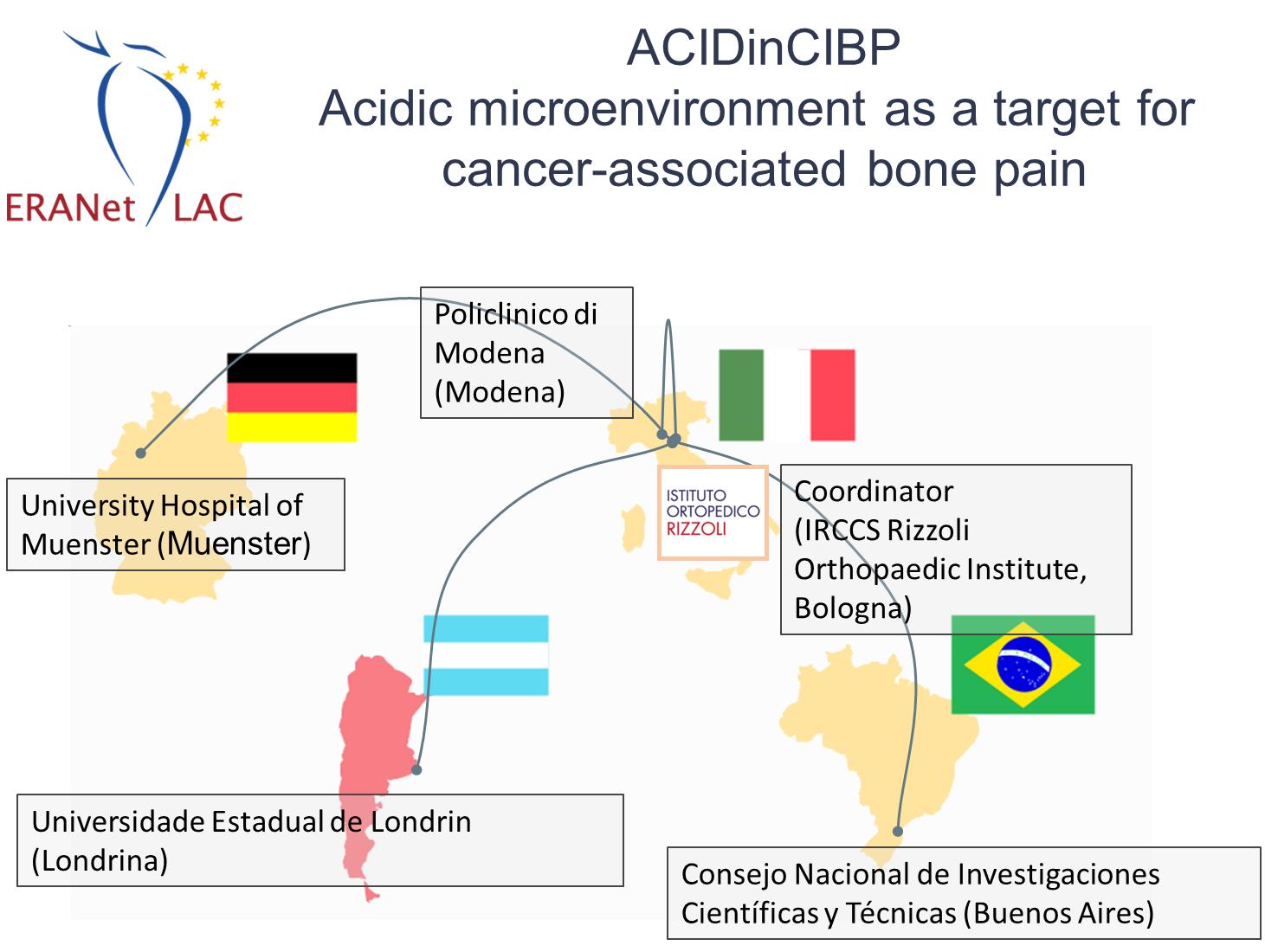Acidic microenvironment as a target for cancer-associated bone pain

Cancer associated bone pain (CIBP) is a common event in patients with advanced disease with bone metastases (BM), significantly impairing their quality of life. Treatment options are limited and mainly based on the use of opioids. These are only partially effective, however, and their use is constantly associated with significant patient discomfort.
Local acidosis is a wellknown cause of pain due to the stimulation of nociceptors that innervate bone and express acidsensing ion channels, and CIBP elicited by acidity is not targeted by current therapies. In BM, local acidosis occurs as a consequence of acidification of lysosomes of bone resorbing osteoclasts and of tumor cells with high glycolitic activity due to the Warburg effect. The acidic microenvironment of BM can cause pain by promoting a direct acidsensing neuronal stimulation coupled with hyperalgesia that derives from the acidinduced inflammatory reaction at the tumor site. We have preliminary found that local acidosis induces the release of inflammatory mediators by tumorassociated stromal cells via activation of the NFkB pathway, and that vacuolar ATPase blockers, such as omeprazole, strongly and significantly reduce pain in preclinical in vivo models of CIBP.
Through the establishment of a consortium with 5 different units, including research centres and hospitals in Italy, Germany, Argentina, and Brazil, we first intend to compare the current analgesic treatment protocols for patients with BM in EU and LAC countries and, at the same time, to validate acidosis in tumor microenvironment as a novel target to treat CIBP. Then, we will test the ability of antiacid strategies to interfere with the increased proton efflux in tumor microenvironment, thereby blocking the stimulation of nociceptors in bone.
To reach these aims, this project relies on 5 different workpackages, including: a multicentric prospective observational study on patients with BM to compare the current therapeutic protocols and to correlate pain with intratumoral acidosis and acidinduced inflammation; an in vitro study on cells of BM microenvironment to dissect how intratumoral acidosis generates a nociceptive and inflammatory signal; a preclinical study that will set up innovative models to study the acid-induced pain signal in BM both at the central nervous system and at the spinal cord through functional magnetic resonance imaging (fMRI) of the brain and the analysis of the inflammatory reaction; and a clinical study with proton pump inhibitors on patients with BM to treat pain.
This integrated approach will ultimately translate into a significant increase in the knowledge of the differences in the treatment protocols for CIBP between EU and LAC countries, and in the identification of novel therapeutic approaches that, in the long run, will lead to an improvement of wellbeing in patients with advanced cancer.
Principal investigator

